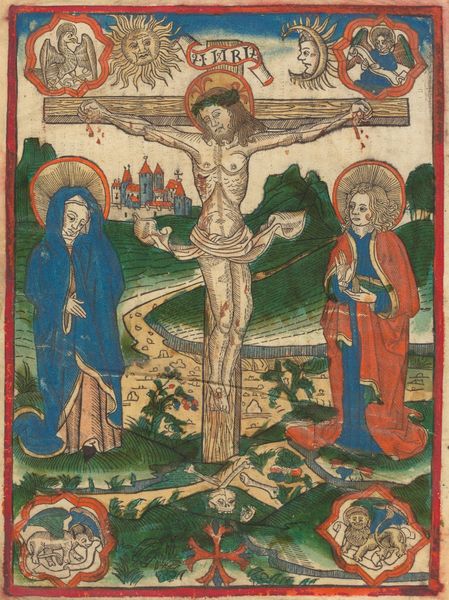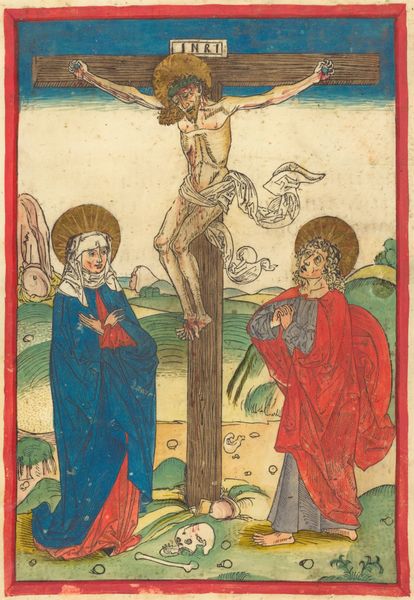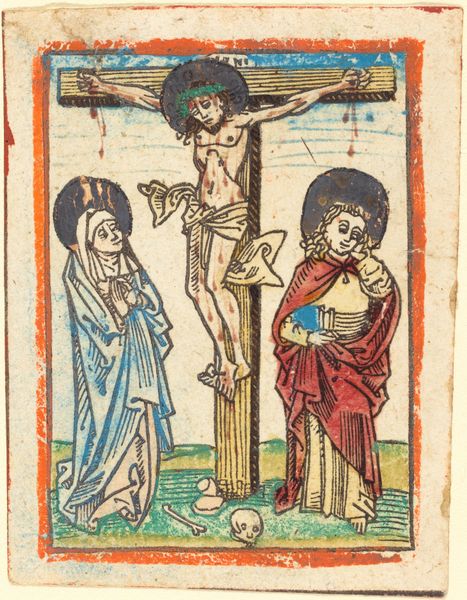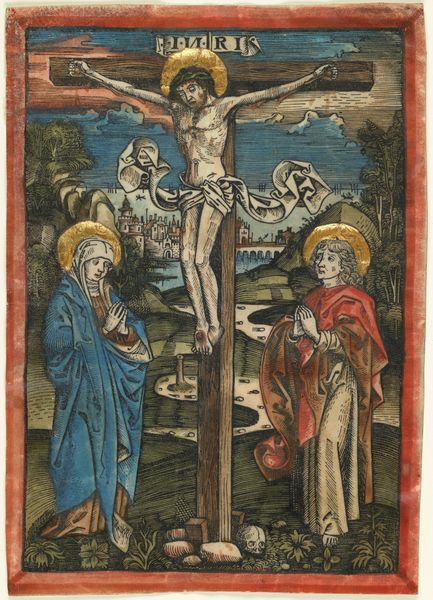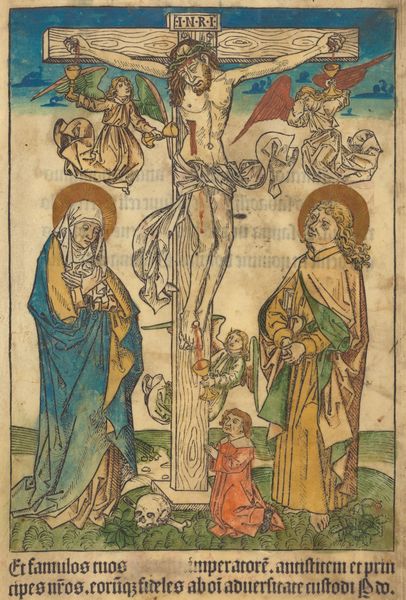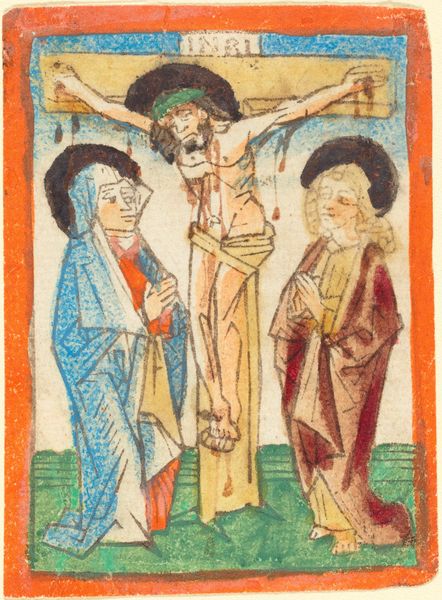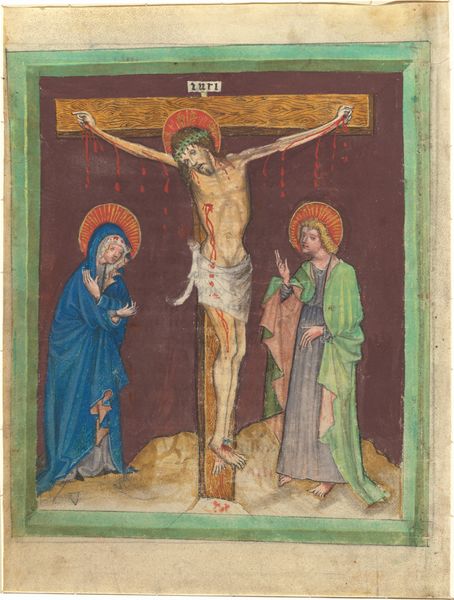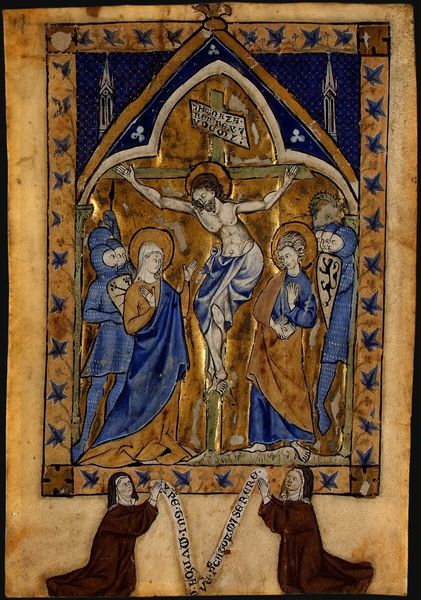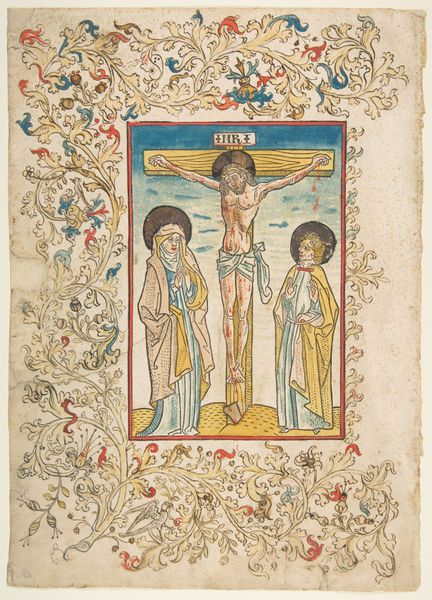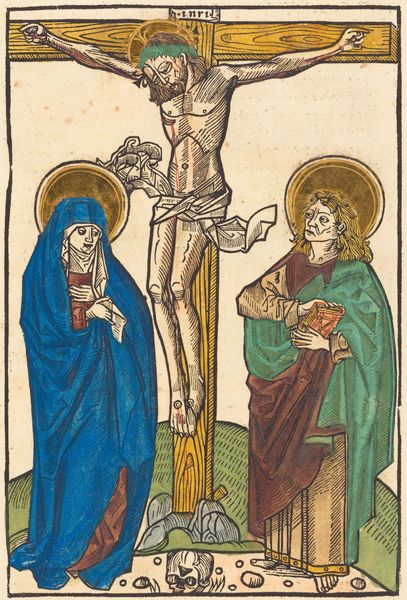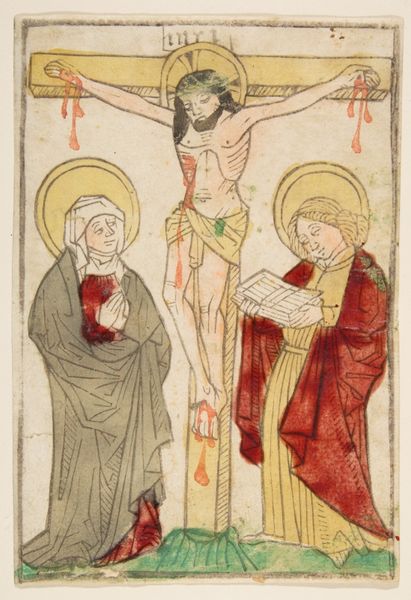
painting, print, watercolor, ink
#
narrative-art
#
painting
# print
#
figuration
#
watercolor
#
ink
#
coloured pencil
#
history-painting
#
international-gothic
Dimensions: block: 24.9 x 17.6 cm (9 13/16 x 6 15/16 in.) sheet: 30 x 20 cm (11 13/16 x 7 7/8 in.)
Copyright: National Gallery of Art: CC0 1.0
Curator: Here we have an early print titled "Christ on the Cross with Angels," dating back to 1483, its maker remains anonymous. The piece combines ink, watercolor, and colored pencil. What strikes you most at first glance? Editor: The materiality seems immediately noteworthy, especially the contrast between the delicacy of the watercolors and the relative coarseness of the printmaking. There's also a strong sense of emotional labor—the artist clearly invested a lot of time into this. Curator: Yes, the intricate detail is fascinating. Look closely at the composition: Christ dominates the vertical axis, balanced by Mary and John below, and those hovering angels collecting blood. Notice how the stylized figures are framed with this ornate foliate border. Do you think this reflects its original purpose? Editor: I’d venture it does. Considering its historical context, perhaps intended as a personal devotional image bound within a prayer book. This speaks to the labor involved not just in its artistic creation, but also in its reception and usage – handled, studied, contemplated. Who was producing and using pieces such as this? Were they intended for a wealthy individual or a monastic setting? Curator: The influence of International Gothic art is very clear, expressed through that idealized form and elegant line work. Note the symbolic objects: the skull at the foot of the cross, a memento mori. Do you find those aspects successfully conveying the gravity of the crucifixion? Editor: The combination of a relatively simple process, but with significant manual involvement through hand coloring adds a certain intimacy to an otherwise rather ubiquitous religious image. That it would have required many stages of artisanal production and skill is definitely more interesting than its symbolism alone. Curator: A productive way of looking at devotional pieces from this period that allows us to move beyond iconographic convention, perhaps into appreciating the skilled workmanship involved. Editor: Indeed. It also brings to mind how crucial art production and dissemination was, not just to elite commissions but to broader societal needs. Thank you.
Comments
No comments
Be the first to comment and join the conversation on the ultimate creative platform.
